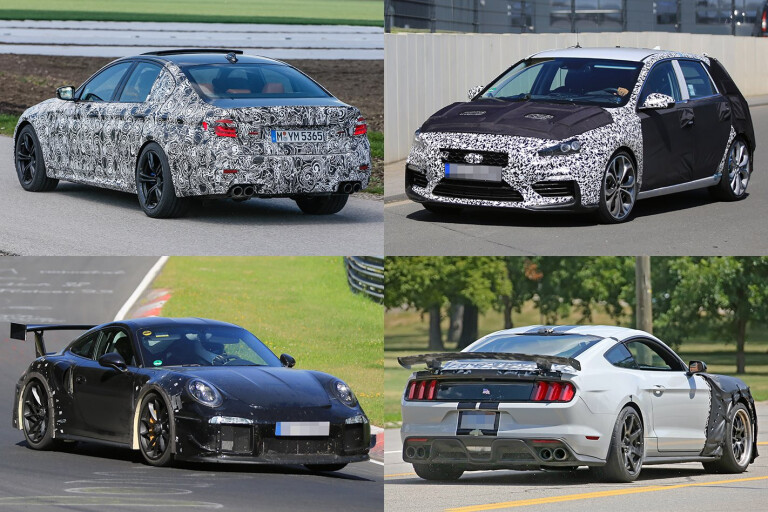
Every car company is going to talk about electric and autonomous cars throughout 2017. Fortunately for us, talk is all it will be.
Well, it’ll be all talk and behind-the-scenes development, but the technology they’ll actually have in showrooms will seem warmly familiar. And a lot of it will seem pretty fast.
It’s going to be a strange year. The likes of BMW, Audi, Mercedes-Benz and Jaguar will continue making pots of cash from their high-performance sub-brands, with even Australia regularly popping up as AMG’s number three market in the world despite our population.
But the Japanese makers have tried, failed, succeeded, failed again, withdrawn, re-entered and withdrawn again from following with hi-po sub brands. They’ll try again, but they won’t be alone, because the Koreans are having a chop at it now, too.
And, for us, there’ll be a last hurrah from HSV...
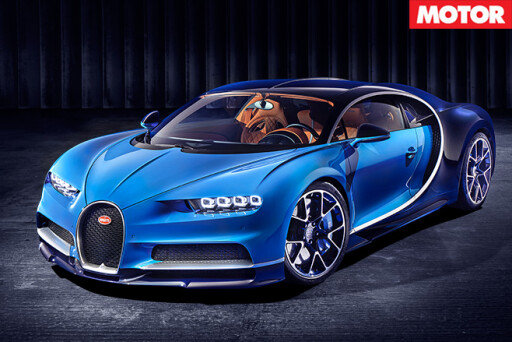 01. Bugatti Chiron
01. Bugatti Chiron
Veyron replacement has big shoes to fill in a new landscape
Bugatti’s planning to build 500 of these things and it’s already sold 200 of them, which isn’t bad considering it’s a fancy facelift. Sort of.
Don’t expect it to be as stupendously received as the Bugatti Veyron, though,
even with 1103kW of power and 1600Nm of torque from the 8.0-litre, four-turbo W16 motor.
The Veyron arrived as a flag-on-Everest exercise, bringing mass-production validation to the sometimes-sketchy world of hypercars. At the time it looked like the last great flourish of internal-combustion engineering.
The Chiron might be faster, exploding to 200km/h in less than 6.5 seconds and limited to 420km/h, but from some angles the Chiron looks more like it came from a late decision and got rushed through development.
It carries over an awful lot of Veyron ideas, including the engine and transmission, though it does score a new carbon-fibre chassis.
But in a world where Formula E champ NextEV has broken the all-electric Nurburgring record with its megawatt four-motor Nio EP9, and Rimac’s Concept One is making the establishment look sluggish, all of a sudden the Chiron starts to look a bit like yesterday where the Veyron looked like tomorrow.
It will be fast, though, and that’s the main thing with any Bugatti. Try zero to 300km/h in less than 13.6 seconds and, with its limiter removed, Bugatti estimates it’ll reach 463km/h – about 190km/h quicker than the takeoff speed of Airbus’s massive A380.
Not that the Chiron isn’t a massive unit itself, weighing 5kg less than
two tonnes, and it’s more than two metres wide.
 02. Lamborghini Performante
02. Lamborghini Performante
Track-focused Huracan to cut weight and increase grunt – what’s not to like?
This one was predictable, with Lamborghini rolling out basically the same game plan for the Huracan it used for the Gallardo. And why not? That worked out well.
So the Performante will arrive this year as the track-focused version of the Huracan, complete with active aero, tauter suspension, different wheels and a massaging of the already impressive power figures.
It’s not clear if the Lamborghini Performante will be all- or rear-wheel drive but the precedent for all-corner traction is there with the Superleggera. If it is all-wheel drive, it’ll be a more aggro tune.
Of course it’ll also be stripped out with sports seats. However, even that isn’t enough, so Lamborghini will fit forged carbonfibre panels to make it even lighter. Then there’ll be a big wing to make it heavier again, particularly in corners.
While the rear-drive LP580-2 has been detuned from the stock Huracan, it’s likely the Superleggera will go the other way and score a bit more power. Although, exactly how much more power is something we’ll have to wait to find out.
 03. HSV W1
03. HSV W1
Curtain call will be one to remember
HSV is going out with a bang and after so many fried tyres, drifts and even detonated steering systems over so many years, it’s going to be a mournful bang.
So HSV has reached in to the superseded Corvette and grabbed a blown 6.2-litre LS9 V8, with 476kW of gristle, and stuck it under the nose to cheer us up. The ’Vette ran to 820Nm of torque so expect the number to be somewhere around that. It will very likely be the fastest production car ever produced in Australia.
Part of the W1’s strategy to tame all that power will be adaptive, Australian-made Supashock billet dampers replacing the current magnetic-ride versions. Even with limited traction thanks to its huge power, it will still manage a 0-100km/h time of around four seconds and a high-11 second quarter mile.
The three-pedal car will use the Tremec TR-6060 six-speeder, which is not a delicate thing to use, and a mechanically-locking limited-slip diff. And there will only be 250 of them, at somewhere around $170,000.
 04. Hyundai i30 N
04. Hyundai i30 N
Performance starts with N
Its years of getting consistently beaten up by Volkswagen in the WRC are over and now Hyundai insists it won’t be taking a backward step on the road, either.
After poaching BMW M’s development boss Albert Biermann on a rumoured €700,000-a-year contract to run its nascent N division, it will deliver both road and track packages for its first hot car, the i30 N, midway through this year.
One of them will have a road-usable suspension setup and the other will have a road-barely-tolerable suspension tune – and if they’re not enough, there’s an even hotter RN30 on the books for 2018.
The i30 N takes the stock standard i30 hatch and gives it more power, adjustable dampers, different engine performance modes as well as completely new front suspension geometry and hardware.
 05. Porsche GT2
05. Porsche GT2
The ultimate go-fast 911 returns to the fold
The 911 GT3 RS is a great car, and fast. The 911 R is a scorching, charming car, and unattainable. However, this year’s 911 GT2 will be the very fastest 911 money can buy.
We know it’s slated for this year, because they don’t start showing off at the ’Ring until the car’s almost ready. Porsche loves the Geneva motor show, and it’s most likely going to be launched there, with something around 520 kilowatts.
While the next-generation GT race version of the 911 has gone mid-engined, the GT2 will retain the bi-turbo, six-cylinder engine on the scary side of the rear axle.
Oddly, the 991 911 generation didn’t actually have a GT2, with Porsche waiting for its facelift. That left GT2 fans with a six-year weight between their favourite tyre fryer, and there’s also a track-focused GT2 RS version for next year.
Even so, after all that waiting, the new GT2 will only have a production run of about two years.
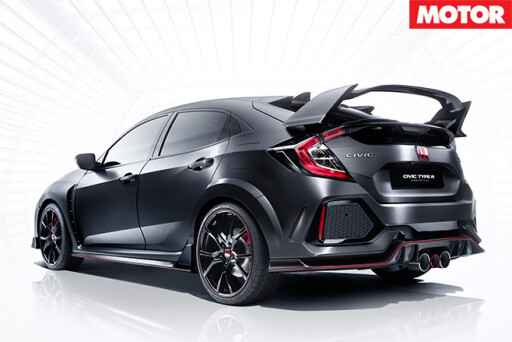 06. Honda Civic Type R
06. Honda Civic Type R
Fast front-driver to take fight to all-paw rivals
Ford’s Focus RS has raised the bar for hot hatch makers and Honda is determined to jump over it with the Type R.
It will be a front-driving rocket, with an upgrade of the ninth gen’s 2.0-litre,
four-cylinder turbo engine.
Expect around 250kW of power and 440Nm of torque from the $50,000 hatch, and you won’t miss it in traffic with the pizza-tray rear wing and huge Brembo anchors.
It will rev to 7000rpm and use a mechanical limited slip diff, while there’s also growing talk that the six-speed manual gearbox will be partnered by a continuously variable transmission instead of an automatic or a dual-clutch transmission.
 07. Renault Sport Megane
07. Renault Sport Megane
Frenchie heats up
Renault’s Sport operation is gaining credibility with every new front-drive offering it burps up and the Megane looks set to add to the story.
This is a car more about handling than outright grunt, with Renault Sport going to an optional four-wheel steer system to help cornering.
There will also be a track-focused version, dubbed the RS, and all variants will be five-door hatches.
There’s an all-new engine (not the unfortunately named F4RT family) and it will have around 224kW sent to the front wheels.
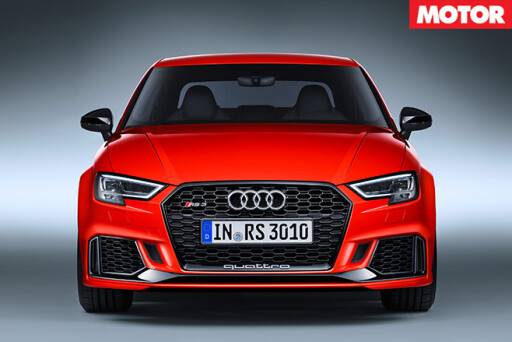 08. Audi RS3
08. Audi RS3
New five-pot screamer and sedan join range
At about $80,000, the RS3 will bring a lot of the TT RS tech downmarket, with the cast-iron block turfed for an alloy unit that helps the handling by lifting the weight off the nose.
The sedan will have 294kW and 480Nm from the 2.5-litre inline five and the all-wheel drive system gets launch control and far faster power redistribution whenever it’s sliding.
The TT RS is lighter, so sprints to 100km/h four-tenths quicker than the 4.1-second RS3, but the new car is still two-tenths quicker than the outgoing 270kW five-door hatch.
 09. BMW M5
09. BMW M5
Bavaria ups the ante to take on the mighty E63
All-wheel drive comes to the M5, some say finally, and that’s going to slash the one-second 0-100km/h gap to the AMG E63 S to, err, about zero.
It will run an upgrade of the current V8, with a pair of hot-vee, twin-scroll turbos, however it won’t quite get the 5-Series’ 100kg weight drop because of the heavier all-wheel drive system.
It will have around 600 horses, get to 100km/h in less than 3.5 seconds and will debut some cool new in-car toys.
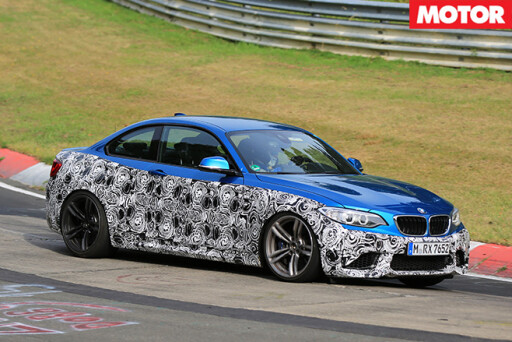 10. BMW M2 CSL
10. BMW M2 CSL
Baby M-car to receive the CSL treatment
Everybody loves the M2. It’s what an M jigger ought to be, while the M4 is a bit more junior Grand Tourer.
But there’s a $50,000 gap between the two cars and that’s a bit of real estate to fill. Besides, if the stock M2 is great, a lighter, faster version will be awesome, right?
Sources say that’s coming either late this year or in the first half of 2018.
There will be more grunt, too, with some extra boost to slip the torque number to around 520Nm, but don’t expect it to be faster in a straight line.
It could be, of course, but the M2 gets to 100km/h in 4.3 seconds and the M3 does it 0.2 seconds faster, so that’s not a lot of wriggle room. However, it’ll be a different story in the winding bits.
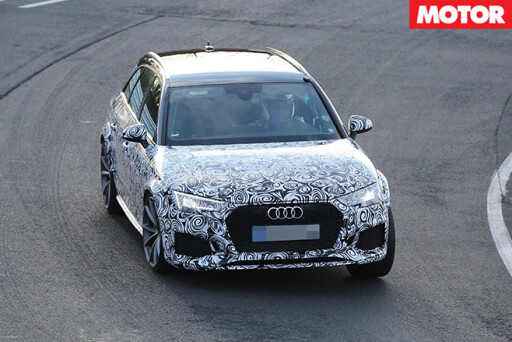 11. Audi RS4
11. Audi RS4
Power figure climbs as cylinder count drops
There is confusion over this car. Audi has two turbocharged V6 performance motors and the RS4 will use the 2.9-litre twin-turbo unit designed by Porsche.
The 90-degree unit, which will be shared with the R8, should pump out between 350kW and 370kW, so V8 fans don’t have to be worried in power terms.
Oh, and the other one is a 3.0-litre, Audi-developed V6 that can be seen in the S5.
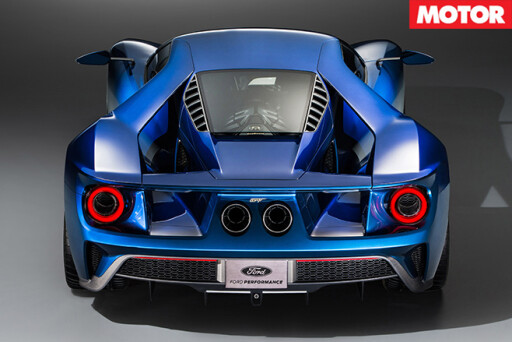 12. Ford GT
12. Ford GT
On-track winner to hit driveways
The Australian-designed GT was launched in Detroit two years ago, it won Le Mans last year and customers are getting production cars this year.
The car that forced the Corvette to go mid-engined, the GT production run will only be 1000 cars and limited to 250 a year.
It ditches V8 power for a twin-turbocharged 3.5-litre V6, but the carbonfibre wonder won’t be cheap.
Ford took four of them to Le Mans and recorded lap times four seconds quicker than some of its rivals.
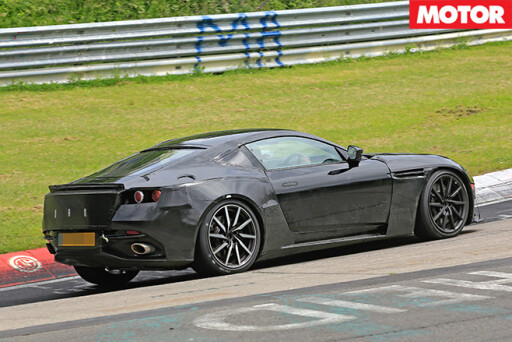 13. Aston Martin Vantage
13. Aston Martin Vantage
Vatange to follow in DB10 footsteps
If the Vantage makes it in 2017, it will be only just. In reality 2018 is the more likely release date, but it’s too cool, traditionally, to leave out.
It retains a lot of the styling signatures of the DB11, but Aston insists it will take more cues from the DB10 in Spectre than the big GT.
It also leverages everything AMG wants to give it, including the bi-turbo 4.0-litre V8 from the GT, with around 300kW of power in base spec and closer to 325kW from the heavier hitter. There will also be a 5.2-litre V12 as an option, while a dual-clutch seven-speeder will be the lazy pick over the six-speed manual.
 14. Porsche 991.2 911 GT3
14. Porsche 991.2 911 GT3
Purists get their way
The overwhelming glee from everybody who used the 911 R’s six-speed manual gearbox forced Porsche to make a decision it didn’t want to make.
Yes, the GT3 will once again be offered with a manual gearbox – we can hear the cheers already.
Sure, the dual-clutch PDK will be the thing to have to make lap times (and will be standard in the GT3 RS), but the six-speed manual ’box will be the standard transmission on the upgraded GT3.
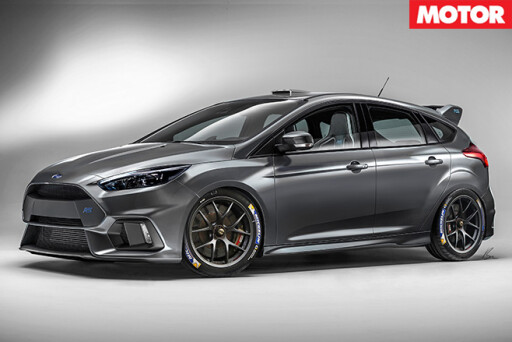 15. Ford Focus RS500
15. Ford Focus RS500
Blue Oval prepares hot-hatch warfare
THE big question now is why would you buy a Mustang when you can get an RS500 version of the ripping Focus RS? It’ll be lighter, stiffer, grippier and it’ll have bigger brakes.
Ford thinks it’ll be enough to get around the ’Ring quicker than any other hot hatch in the foreseeable future, even though the power won’t rise much from the current RS’s 257kW 2.3-litre turbo four.
Sadly, there will only be 500 of them, but it should be enough to lift the Focus into the fight with Audi Sport, M and AMG, and it could be enough to put Hyundai’s N back in its box.
 16. Kia GT
16. Kia GT
Concept turns into a reality
This screams that Kia is looking to move into posher post codes, with its first rear-drive fast sedan (available with all-wheel drive in overseas markets).
The architecture is bound, obviously, for the upmarket Genesis brand, but it will show up first as a Kia, with turbocharged four- and 3.3-litre twin-turbo six-cylinder power.
Producing 272kW/510Nm, it’s aimed at European offerings but with a projected price tag of around $50,000, it’ll be a possible replacement for those mourning the loss of the Commodore SS.
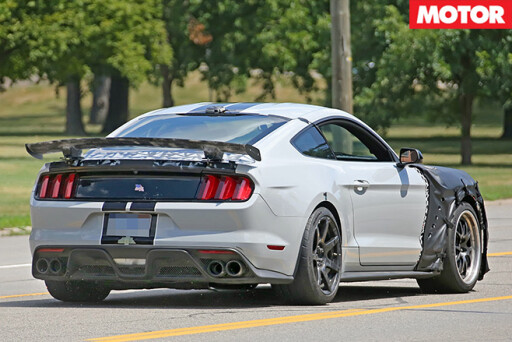 17. Ford Mustang GT500
17. Ford Mustang GT500
Pony to get bigger sting in its tail
The Mustang coupe is a nice machine, but it’s getting its freckle kicked in public power perception by the Hellcat range. After all, to get 700 horsepower in a production car you can either get a Hellcat or you can spend another half a million dollars.
It’s all a bit speculative at the moment, but there are filings in the US for a 5.8-litre V8 motor. And that’s a good thing. There is speculation that the motor could be turbocharged, too, with well over 500kW of power – some sources are suggesting 550kW – and all that in a rear-drive package.

COMMENTS